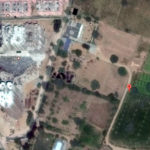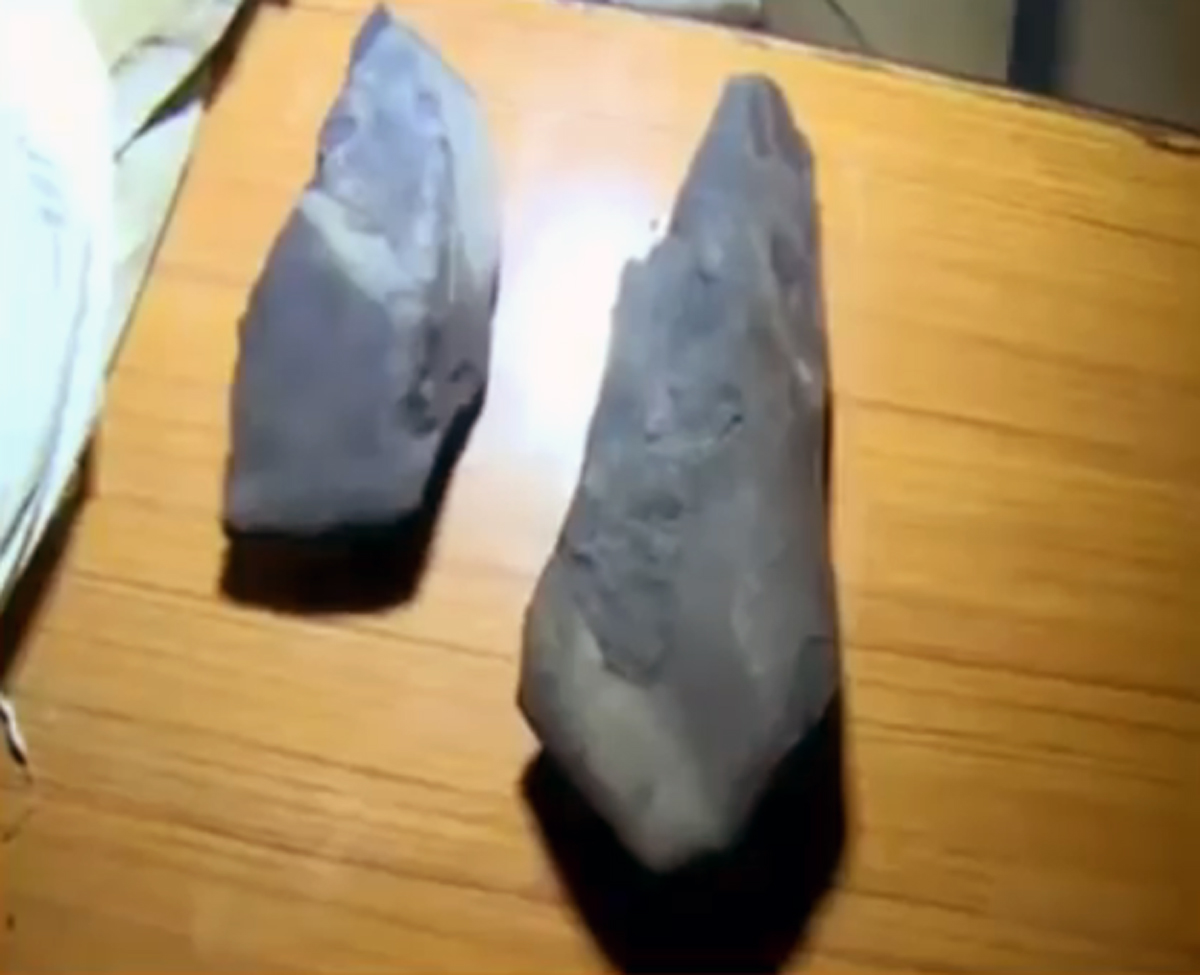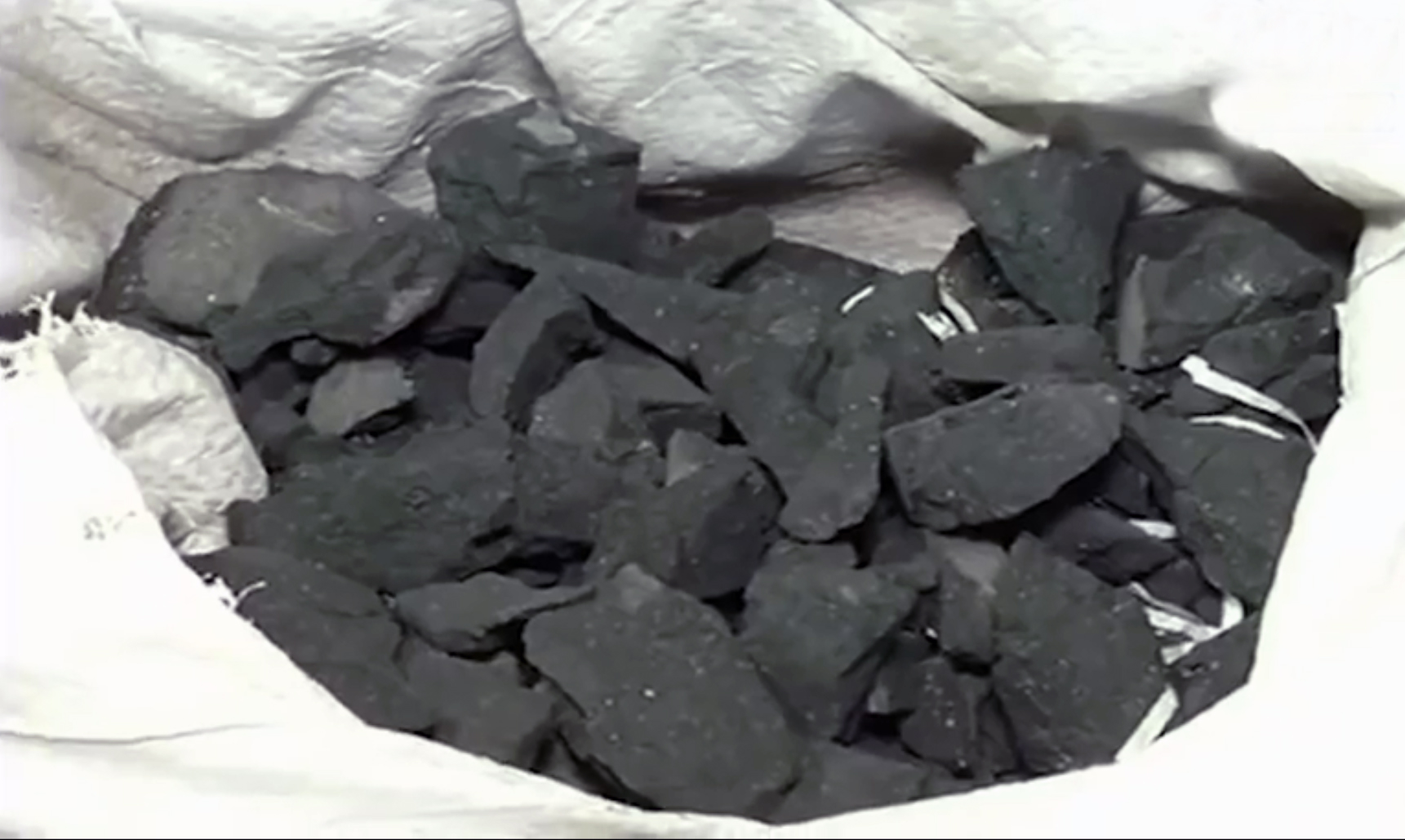MUKUNDPURA (CM2) meteorite fall (>2.23 kg) on 6 June 2017 at ~5:15 a.m. IST (UTC+05:30) in Mukundpurā (मुकुन्दपुरा), Jaipur (जयपुर), Rajastan, India (updated: 27 March)
Last update: 27 March 2018
On 6 June 2017 at about 5:10-20 a.m. IST (UTC+05:30) a carbonaceous meteorite, apparently weighing ~ 3.13 kg in total, fell on the farmland of Banśī Bāgaṛā (बंशी बागड़ा) in the village Mukundpurā (मुकुन्दपुरा) ♫, about 14 km west-southwest of Jaipur (जयपुर) ♫, Rajastan, India. Many villagers saw the bolide for about five to six seconds, heard loud detonation sounds and felt the shock wave which some considered to be an earthquake. The bolide’s flare was apparently seen in a North-northwestern direction, other sources mention a western direction. The preliminary azimut of the bolide’s trajectory is officially given with N20°W and a trajectory angle of about 32°. A local villager found the meteorite in its ~15-cm-deep, ~43-cm-wide circular impact pit and informed the police office in Bhānkrota (भांकरोटा). On impact the meteorite, a carbonaceous chondrite, broke into two elongated regmaglypted larger fragments (~ 15.25 cm and ~ 10.25 cm long), another larger one, several mid-sized ones and many smaller ones. The total weight of the officially recovered fragments is 2.23 kg. The matrix of larger fragments shows distinct lithologies which might show very well in X-ray microtomography data. The fall location is ~26.881481, 75.663954. Sandy impact ejecta mixed with smaller meteorite fragments could be found along the eastern and east-southeastern rim of the impact pit. The impact pit was covered with tarpaulins to protect it. A few hours after the fall, before noon, almost all of the meteorite fragments on the sandy surface in and around the impact pit were removed and brought to the Bhānkrota police station where they were presented to the media. Since the fragments were collected so soon after the impact they were hardly or not at all exposed to precipitation and thus remained rather pristine. This quality makes them particularly important for scientific research. The classification was done at the Physical Research Laboratory (PRL), Navrangpura, Ahmedabad. The main mass is kept at the Geological Survey of India. A sample of the meteorite has been registered at the National Meteorite Repository (NMR), GSI, Central Headquarters (CHQ), Kolkata with the registration number S-458. On 27 March 2018 the meteorite was registered as CM2 chondrite in the Meteoritical Bulletin Database with the official name Mukundpura.
Chemical, isotopic and amino acid composition of Mukundpura CM2.0 (CM1) chondrite: Evidence of parent body aqueous alteration
N.G. Rudraswami, A.K. Naik, R.P. Tripathi, N. Bhandari, S.G. Karapurkar, M.Shyam Prasad, E.V.S.S.K. Babu, V. Sarathi
Geoscience Frontiers, In Press, Accepted Manuscript, Available online 17 February 2018
“Highlights
• Mukundpura has turned out to be quite a unique CM2.0 (CM1) chondrite based on its chemical composition, texture, mineralogy, water content, N and C bulk content, N and C carbon isotope, trace elements, and amino acids, it can be considered as one of the most primitive meteorites.
• The Mukundpura chondrite has the least chondrule to matrix ratio indicative of large aqueous alteration on its parent body.
• The evidence of large quantity of organic matter also support the primitiveness of this chondrite.”
“The carbonaceous chondrites are intriguing and unique in the sense that they are the only rocks that provide pristine records of the early solar nebular processes. We report here results of a detailed mineralogical, chemical, amino acid and isotopic studies of a recently observed fall at Mukundpura, near Jaipur in Rajasthan, India. Abundance of olivines in this meteorite is low and of serpentine minerals is high. FeO/SiO2 =1.05 in its Poorly Characterised Phases (PCP) is similar to that observed in other CM2.0 chondrites. The water content of ∼9.8 wt.% is similar to that found in many other CM chondrites. Microscopic examination of matrix shows that its terrestrial weathering grade is W0 but aqueous parent body alteration is high, as reflected in low abundance of identifiable chondrules and abundant remnants of chondrules (∼7%). Thus, most of the chondrules formed initially have been significantly altered or dissolved by aqueous alterations on their parent bodies. The measured bulk carbon (2.3%) and nitrogen content and their isotopic (δ13C= −5.5‰, δ15N=23.6‰) composition is consistent with CM2.0 classification probably bordering CM1. Several amino acids such as Alanine, Serine, Proline, Valine, Threonine, Leucine, Isoleucine, Asparagine and Histamine are present. Tyrosine and Tryptophan may occur in trace amounts which could not be precisely determined. All these data show that Mukundpura chondrite lies at the boundary of CM2.0 and CM1 type carbonaceous chondrites making it one of the most primitive chondrites.”
Characterization of Mukundpura Carbonaceous Chondrite
R. P. Tripathi, Ambesh Dixit, N. Bhandari
Current Science
Vol 114, No 01 (2018)
Pages: 214-217
Published: 2018-01-10
https://doi.org/10.18520/cs%2Fv114%2Fi01%2F214-217
“Two meteorite fragments collected from the Mukundpura impact site, Rajasthan, India have been analysed using scanning electron microscopy, energy dispersive X-ray spectroscopy, Mössbauer spectroscopy, thermogravimetric analysis (TGA) and Raman spectroscopy. High Fe (22.65 wt%), Ni (1.53%) and S (3.69%) and concentrations of other elements obtained by X-ray analysis indicate that it is a carbonaceous chondrite. Mossbauer spectra show similarity with those obtained from Cold Bokkeveld and Murchison carbonaceous chondrites, and this analogy allows us to classify it as belonging to CM group of carbonaceous chondrites. TGA shows large weight loss, implying presence of significant amount of volatiles in this meteorite and Raman spectroscopy shows the presence of abundant organic matter consisting of disordered and aromatic (graphitic or polyaromatic) carbon. These results indicate that Mukundpura meteorite is a rare type of extraterrestrial object deserving further in-depth studies. “
Mukundpura
Micro Visions
by John Kashuba
The Mukundpura meteorite, a new fall of CM chondrite
Dwijesh Ray, Anil D. Shukla
Planetary and Space Science
In Press, Accepted Manuscript, Available online 10 November 2017
“Highlights
• Mukundpura is a new CM chondrite fall.
• Petrological classification suggests Mukundpura is CM2 type.
• Phyllosilicate and calcite in matrix suggest for modest aqueous alteration.”
“Mukundpura is a new CM chondrite fell near Jaipur, Rajasthan, India on June 6, 2017 at 5:15 IST. The fall was observed by local villager. According to eyewitness, the meteorite was fragmented into several pieces once the object hit the ground. Based on petrography, mineralogy and bulk composition, Mukundpura is classified as CM2 chondrite. The chondrules are mainly similar to type I (Olivine: Fo99). Olivines are often found associated with pyroxene (Wo10-35En62-87Fs2-7) phenocryst. However, occurrences of forsteritic and fayalitic olivine (Fa58-71) as isolated mineral clast in matrix are not uncommon. Other types of chondrules include porphyritic pyroxene (En86Fs14) and barred olivine (Fa32.7±0.3) clast. Chondrules are commonly rimmed by fine-grained accretionary dust mantles. Phyllosilicates are the most dominant secondary mineral in matrix and largely associated with poorly characterised phases (PCP). FeO/SiO2 and S/SiO2 of PCP are 2.7 and 0.4 respectively. Other phases in matrix generally include calcite (pure CaCO3), Fe-Ni metal and sulphides. Spinel and perovskite occur occasionally as inclusions. The spherical or elliptical shaped metals (within chondrule or in isolated grains) are low-Ni type (kamacite <7.5 wt%) and resembles the solar Ni/Co ratio. However, Ni content in metal rarely exceeds 8.5 wt% (up to 23 wt%, taenite). Pyrrhotite (Fe ∼62 wt%; S ∼38 wt%) and pentlandite (Fe ∼31–33 wt%, Ni ∼28–32 wt%, S ∼33 wt%)) are the common sulphides occur as isolated grains within the matrix, however, the former is the most dominant. The bulk chemical composition of Mukundpura is largely similar to other CM type chondrite (e.g. Paris CM). Based on petrography, we infer a modest aqueous alteration stage for Mukundpura while the effect of thermal metamorphism was negligible.!”
PRELIMINARY STUDY NOTE ON THE METEORITE FALL AT MUKUNDPURA, BHANKROTA, JAIPUR
PDF (Geological Survey of India, 7 June 2017, last update on 14 June 2017 (17:46))




Video: Lokvarta / ajeet shekhawat
#celestial . A piece of #meteorite #dropped from the #sky in #jaipur #Science #Rajasthan #BREAKING #Archaeology pic.twitter.com/JIqiNJAsNV
— ajeet shekhawat (@AjeetHbc) 6. Juni 2017
Video: Vinit Dixit (published: 6 June 2017, 10:14 am)
Video: Lokvarta
ETV Rajastan (6 June 2017)
जयपुर के भांकरोटा थाना इलाके मुकुन्दरा पूरा गांव में उल्कापिंड गिरने की खबर से ग्रामीण दहशत। pic.twitter.com/O3QFrRzoOi
— Ashok SINGH Gurjar (@ASHOKronsi) 8. Juni 2017
Video: News Nation (11 June 2017)














































